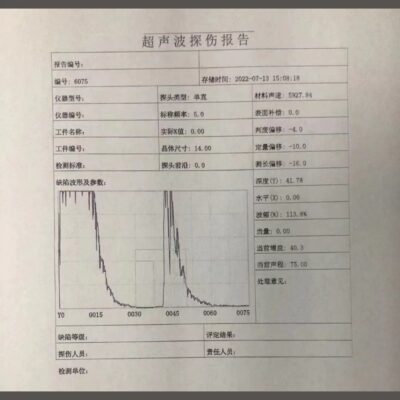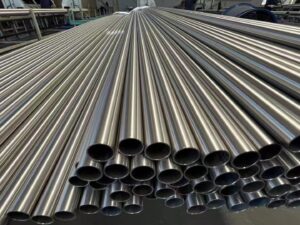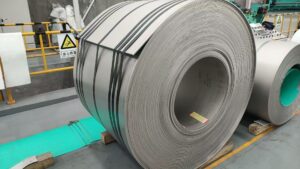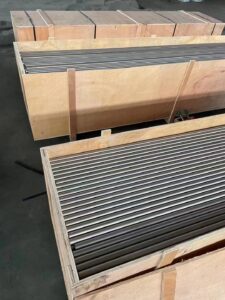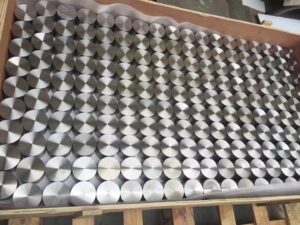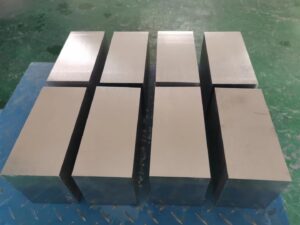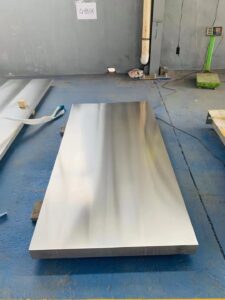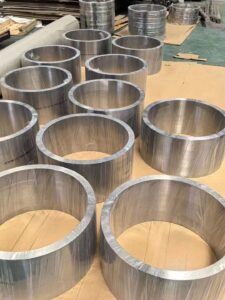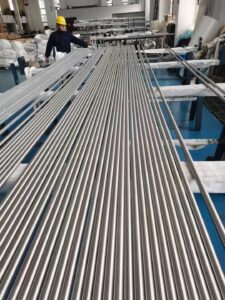Nimonic 75
Nimonic 75 (N06075) nickel-based alloy is a nickel-chromium alloy with extremely low titanium and iron content and excellent high temperature performance. The alloy is added with elements (chromium, tungsten, molybdenum, etc.) different from the atomic size of the base metal to cause the distortion of the matrix metal lattice, and the addition of elements (such as cobalt) that can reduce the stacking fault energy of the alloy matrix and the addition of elements that can slow down the diffusion of matrix elements rate elements (tungsten, molybdenum, etc.) to strengthen the matrix. 1.Precipitation strengthening: Nimonic 75 precipitates the second phase (γ’, γ”, carbide, etc.) from the supersaturated solid solution through aging treatment to strengthen the alloy. The array constant is close to the matrix and coherent with the crystal, so the γ phase can be uniformly precipitated in the matrix in the form of fine particles, which hinders the movement of dislocations and produces a significant strengthening effect. The γ’ phase is an A3B type intermetallic compound, A represents Nickel, cobalt, B represents aluminum, titanium, niobium, tantalum, vanadium, tungsten, and chromium, molybdenum, iron can be either A or B. The typical γ’ phase in nickel-based alloys is Ni3 (Al, Ti). The strengthening effect of the γ’ phase can be enhanced by:(1)increase the number of γ’ phases
(2) Make the γ’ phase and the matrix have a suitable degree of mismatch to obtain the strengthening effect of coherent distortion;
(3) Add elements such as niobium and tantalum to increase the anti-phase boundary energy of the γ’ phase to improve its ability to resist dislocation cutting;
(4) adding cobalt, tungsten, molybdenum and other elements to improve the strength of the γ’ phase. The γ” phase has a body-centered tetragonal structure, and its composition is Ni3Nb. Due to the large mismatch between the γ” phase and the matrix, it can cause a large degree of coherence distortion, so that the alloy obtains a high yield strength. But over 700 ℃, the strengthening effect will be significantly reduced. Cobalt-based superalloys generally do not contain gamma phase, but are strengthened with carbides.
2. Grain boundary strengthening: The grain boundary of Nimonic 75 alloy is a weak link at high temperature. Adding trace amounts of boron, zirconium and rare earth elements can improve the grain boundary strength. This is because rare earth elements can purify the grain boundaries, and boron and zirconium atoms can fill the grain boundary vacancies, reduce the grain boundary diffusion rate during the creep process, inhibit the agglomeration of grain boundary carbides and promote the spheroidization of the grain boundary second phase. In addition, adding an appropriate amount of hafnium to the casting alloy can also improve the strength and plasticity of the grain boundaries. It can also form chain-like distributed carbides at the grain boundaries or cause curved grain boundaries through heat treatment to improve plasticity and strength.Nimonic 75 (N06075) nickel-based alloy manufacturing process and characteristics
- Nimonic 75 (N06075) nickel-based alloys are superalloys that contain no or less aluminum and titanium, and are generally smelted in electric arc furnaces or non-vacuum induction furnaces. When high-temperature alloys containing aluminum and titanium are smelted in the atmosphere, the element burning loss is not easy to control, and the gas and inclusions enter more, so vacuum smelting should be used. In order to further reduce the content of inclusions and improve the distribution state of inclusions and the crystalline structure of the ingot, a double process combining smelting and secondary remelting can be used. The main means of smelting are electric arc furnace, vacuum induction furnace and non-vacuum induction furnace; the main means of remelting are vacuum consumable furnace and electroslag furnace.
- Solid solution strengthening alloys and alloy ingots with low aluminum and titanium content (the total amount of aluminum and titanium are less than 4.5%) can be forged and billeted; alloys with high aluminum and titanium content generally need to be extruded or rolled. The billet is then hot rolled into products, and some products require further cold rolling or cold drawing. Alloy ingots or cakes with larger diameters need to be forged with hydraulic presses or quick-forging hydraulic presses.
- Alloys with a high degree of alloying and not easy to deform are widely used in precision casting, such as casting turbine blades and guide vanes. In order to reduce or eliminate grain boundaries perpendicular to the stress axis in cast alloys and reduce or eliminate porosity, directional crystallization processes have been developed in recent years. This process is to grow the grains along one crystallographic direction during the solidification of the alloy to obtain parallel columnar grains without transverse grain boundaries. The primary process condition to achieve directional crystallization is to establish and maintain a sufficiently large axial temperature gradient and good axial heat dissipation conditions between the liquidus and the solidus. In addition, in order to eliminate all grain boundaries, the manufacturing process of single crystal blades needs to be studied.
- Powder metallurgy process is mainly used to produce precipitation-strengthened and oxide dispersion-strengthened superalloys. This process can achieve plasticity and even superplasticity of cast superalloys that are generally indeformable.
- The performance of the comprehensively treated superalloy is closely related to the structure of the alloy, and the structure is controlled by the heat treatment of the metal. Superalloys generally require heat treatment. Precipitation-strengthened alloys are usually solution treated and aged. Solution-strengthened alloys are only solution-treated. Some alloys also undergo one or two intermediate treatments before aging. The solution treatment is first to dissolve the second phase into the alloy matrix, so that the strengthening phases such as γ and carbide (cobalt-based alloy) can be uniformly precipitated during the aging treatment, and secondly, to obtain a suitable grain size to ensure high temperature creep. and long-lasting performance.
- The solution treatment temperature is generally 1040-1220℃. The alloys that are widely used at present often undergo intermediate treatment at 1050-1100 ℃ before aging treatment. The main function of the intermediate treatment is to precipitate carbide and γ film at the grain boundary to improve the state of the grain boundary. At the same time, some alloys also precipitate some larger γ phase and the fine γ phase precipitated during the aging treatment to form a reasonable match. The purpose of aging treatment is to uniformly precipitate γ phase or carbide (cobalt-based alloy) from supersaturated solid solution to improve high temperature strength. The aging treatment temperature is generally 700-1000 °C
